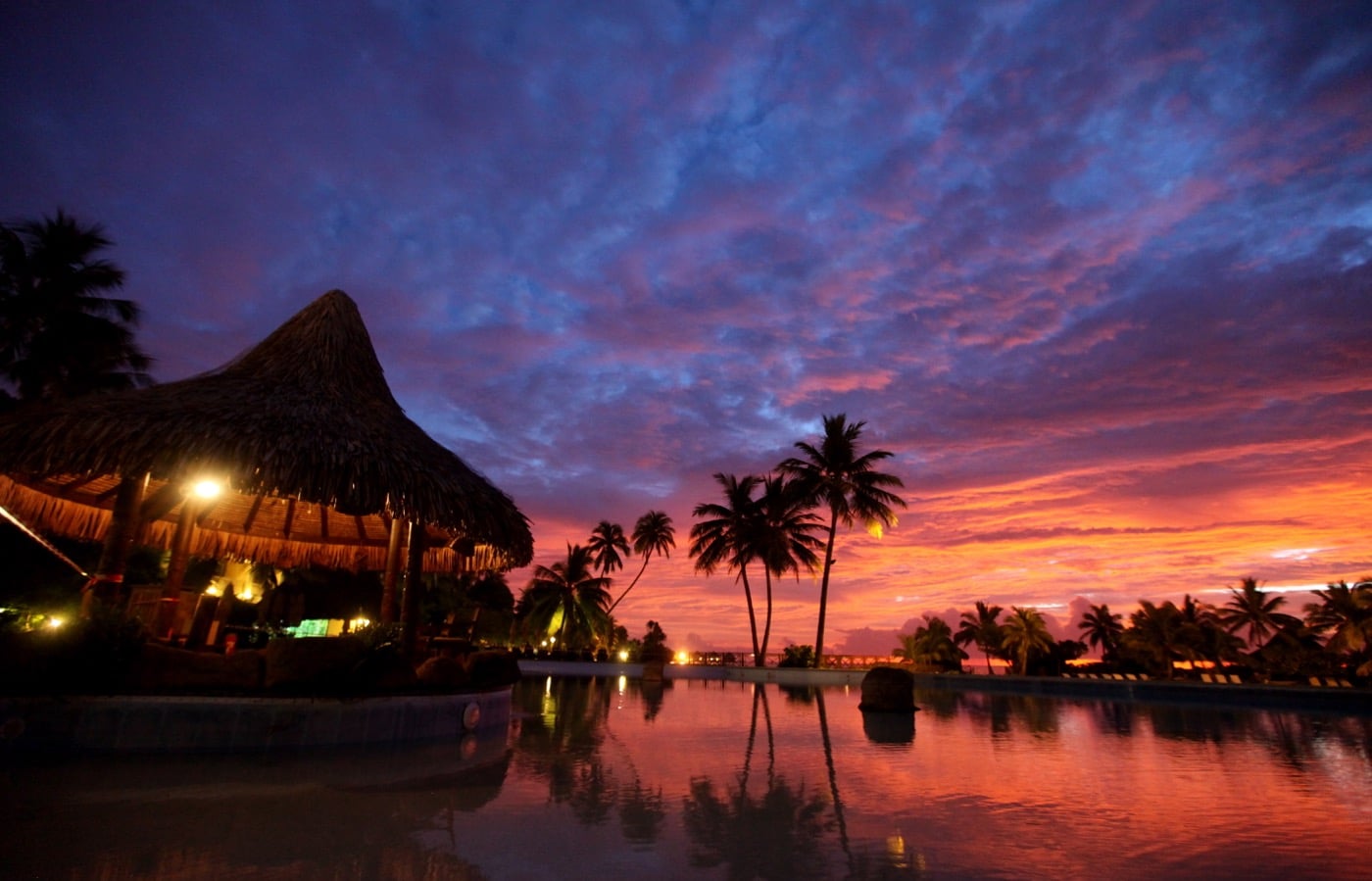The TSA agent looks at my passport and back at me with a skeptical look. “You’re traveling to Tahiti by yourself?” I nod, indicating yes. While French Polynesia is often synonymous with “honeymoon” and “romantic getaway,” I want to see what it has to offer the solo traveler. I figure the worst that can happen is I end up drinking piña coladas on the beach on my own. Not that bad, really.
While Tahiti is the gateway to French Polynesia, the region is actually composed of over 100 islands, each with their own unique personality. Whereas Tahiti is a modernized island with a bustling city center and mass tourism, islands like Fakarava, Raiatea and Tahaa have a more laid back island feel and non-touristy vibe. No matter where you go, however, you’re certain to find unique local touches — like friendly locals sporting tattoos that reflect their heritage, girls wearing flowers in their hair, shell-inspired handicrafts and décor and a culinary culture focused on fish and tropical fruits.
Tahiti
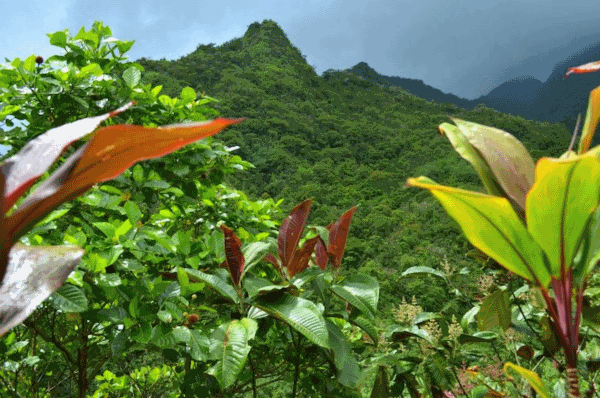
In Tahiti I’m greeted by my shuttle driver on arrival with a fragrant flower necklace made of Tahitian Gardenia and purple orchids. As I explore the island I’m surprised, however, that Tahiti itself has less of an island feel and more of a city on the water vibe. There are strip malls, charming Italian bistros and romantic French restaurants, a downtown with bars and clubs, shopping centers and roads backed up with bumper to bumper traffic come 4 pm. That said, there are many beautiful spots where one can take in the natural beauty, like the Maroto Valley, La Plage de Maui Beach, the Arahoho Blow Hole and its nearby black sand beaches, and the Paul Gauguin Museum and gardens.
Unless you have a car (which can be quite expensive in French Polynesia, especially if you’re traveling alone), it’s worthwhile to book a few tours to help you explore. In my experience traveling on my own, these are the best way to meet other travelers. I’m pleasantly surprised on my Marama Tours 4×4 tour of the Maroto Valley (also known as the Papenoo Valley) to meet another solo traveler and a family – no couples. It’s one of the more adventurous sightseeing tours, your body jumping up and down over rough terrain and jerking around sharp turns through Tahiti’s lush interior. Surrounded by rugged mountain peaks, this was a magical spot for ancient Polynesians. It’s filled with vibrant flowers, tropical fruits (we foraged for wild strawberries, guava and macadamia nuts), natural waterfalls and reservoirs. That’s on top of being formed by a volcano which also added to its sacred nature for ancient Polynesians. In fact, today the Maroto Valley is littered with marae ruins, one of which you can visit on the tour called Mare Fare Hape. Marae were open air, sacred meeting places for religious rites and events, many of which were destroyed with the arrival of Christianity and agriculture. Today, you can view remnants of the stone and coral rectangular structures and their altars and you’ll also visit the site where two long wooden poles with dog heads carved into the top clearly exhibit the ancient Polynesians’ worship of animals and the land. You leave the tour not just with postcard worthy photos but also an appreciation for the natural resources which sustained the ancient culture. 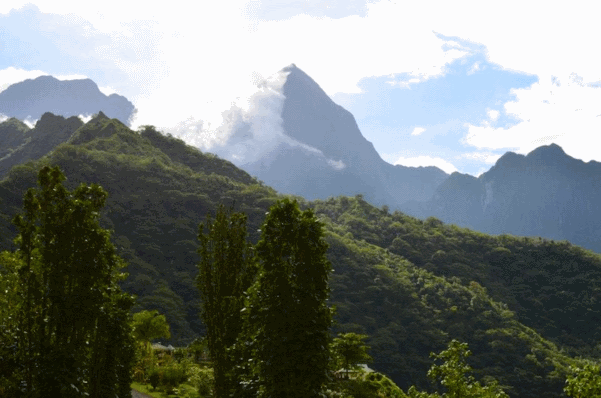
Later, I enjoy walking along the waterfront in downtown Papeete, sampling crepes and steak frites from les roulottes (food trucks) in Vaiete Square and seeing the many historical and natural attractions. But I long to venture to other islands which I hope will provide an even better solo travel experience, especially since (I’ve heard) most have a more relaxed atmosphere that would allow for the chance to really connect with locals.
Fakarava
I start with Fakarava, only an hour and 10 minutes by plane from Tahiti. Part of the Tuamotu-Gambier Islands, Fakarava is a UNESCO listed biosphere reserve due to its untouched landscape and many rare species, some of which are slipper lobsters, squills and sea cicadas. Additionally, the island is touted as one of the best in French Polynesia for scuba diving, especially in the northern pass of Garuae, which is the largest in French Polynesia at 800 meters wide(2,625 feet). Some highlights of a dive in Fakarava include hammerhead sharks and eagle rays from November to April, manta rays from July to October, grey sharks and mating grouper from May to June and dolphins, oceanic sharks, turtles, and barracuda year round.
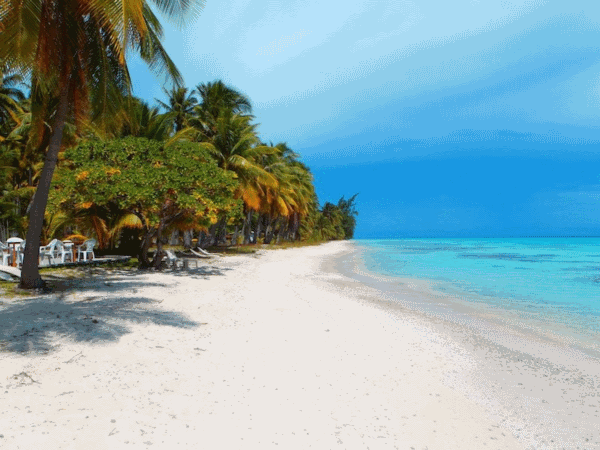
Leaving Fakarava’s tiny airport — which has no security and where the “baggage claim” consists of one man bringing bags one by one – you walk out to a deserted street bordered by a translucent blue lagoon with coral and tropical fish. Aside from the noise of other passengers finding their accommodation pick-ups, it’s completely quiet so I take a moment to truly enjoy the beauty of the surroundings.
There is only one hotel on the island– White Sand Beach Resort — which provides rustic yet comfortable lodgings that meld with the scenery. Aside from that, travelers have their choice of over 10 family-run pensions. Like hotels, pensions come in different classes (as of right now a more rigid system similar to hotel stars is being put in place) and provide a budget friendly alternative to the usual French Polynesian resorts. But you may want to double check, especially if you’re heading outside the Society Islands, that someone speaks English at the accommodation.
I wind up at La Pension Tokerau Village, a simple pension right on the lagoon with a manicured flowering garden. While the owner only speaks French, she does her best to make my stay welcoming, bringing me bottles of water and making traditional home cooked meals for me and the other guests, served family style so everyone can mingle while eating. I’m thankful for this opportunity to meet others in a relaxed atmosphere with casual conversation. While the other guests are couples and families, they‘re all gracious and interested in exchanging tales of their adventures.
My host invites an English speaking friend over to help with translating, a man who owns the nearby Hinano Pearl Farm and he offers to give me a private tour. Most of Fakarava’s income comes from pearl farming and visitors can take a free tour to learn how pearls are cultivated, analyzed, grafted and produced. While pearls are generally white, French Polynesia’s are famous for their black and iridescent hues. After the tour, you can browse the gift shop for a pearl of your own.
A popular tour option on island is a lagoon excursion, each one varying a bit in what’s offered but generally including a motu picnic, bird watching, snorkeling in the southern or northern pass and a visit to the former ruling seat of the Tetamanu Village. There you’ll find pink sand beaches and a Catholic church built from coral in 1874.
Traveling solo, I appreciate how Fakarava makes interaction with locals possible. Cycling is popular here and a ride to the small village of Rotoava gives me the opportunity to chat with fruit sellers, artisans selling shell handicrafts and local restaurant owners. While French Polynesia is generally expensive, I’m happy that I can purchase food in the village for cheap. In fact, I’m able to buy a ham and cheese sandwich for about $3 from the small family restaurant near the church. There’s also a grocery store, perfect for the solo traveler’s budget.
Raiatea 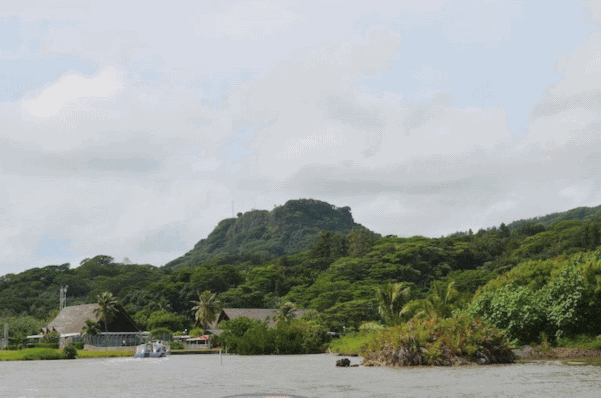
After seeing how different Tahiti and Fakarava are from each other, I decide to continue exploring French Polynesia’s contrasts by flying to Raiatea. This requires going back to Tahiti to catch the 40 minute flight, painless thanks to the relaxed airport security. In fact, when I tell the Air Tahiti check-in staff that I have “fragile items” in my suitcase, they let me gate check my bag (if possible, try to avoid checking as the wait for baggage can be lengthy).
Here I opt for a 3 star hotel, an accommodation that’s hard to find in French Polynesia. Raiatea Lodge Hotel is one of only a few in French Polynesia as most accommodations are either basic pensions or luxury resorts. I’m greeted with a welcome drink before being taken to a spacious room decorated with local flowers and artwork. Of the many amenities my favorites are the powerful rain shower, air conditioning, free WiFi, sumptuous bedding and an expansive terrace with tables and chairs looking out over the gardens, pool and lagoon. It’s also the type of place where the staff remembers your name and I spend a lot of time chatting with one of the servers, nice when you’re traveling alone.
I’m able to get in touch with my adventurous side using the property’s free snorkeling gear to explore the lagoon’s coral gardens and the complimentary kayaks to paddle to the nearby Motu Miri Miri, a deserted white sand island with nothing but palm trees and crabs. While some may find kayaking without a partner a little too solitary, the experience actually ends up being quite moving as I enjoy the serenity of the small island and the impressive views of Raiatea’s rugged landscape from afar. “People who stay here can expect something different from the other islands,” explains Karine Le Maux, the hotel’s Associate Director. “It’s for those who want to explore. Our hotel is often fully booked, but nobody is here from 9am to 6pm because they’re out exploring.” 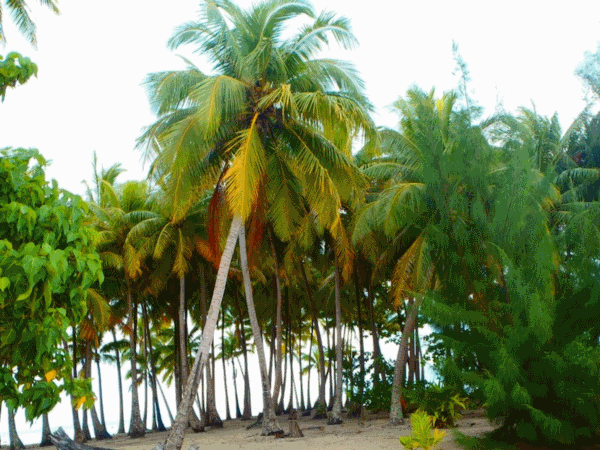
Known as the Sacred Island, Raiatea certainly has much to explore. It has a backpacker feel, which I welcome, and attracts both couples and adventurous souls. Known as the first island to be settled in French Polynesia and the birthplace of Polynesian culture, Raiatea has a rich history. And because it’s less traversed than Tahiti or Bora Bora, the culture has a more authentic feel.
The island’s sacred Marae Taputapuatea is considered the first royal marae of Polynesia, and the seat of religious and political power for the entire destination. It was a place where religious ceremonies, human sacrifices and deep discussions about the world occurred. Moreover, it’s here that priests would come to beckon gods down to Earth to give them the strength they needed for life, work and fertility.
Another fascinating aspect about the island is that it’s home to one of the world’s rarest plants, a hand shaped white flower known as Tiare Apetahi. The plant only grows on top of Mount Temehani, which legend says is the gateway to either heaven or hell for Polynesian souls. Travelers can explore the mountain and its rare flowers on a hike. Other popular trails include the Hamoa Valley Waterfalls, Mount Tapoi and Temehani Rahi Highland. Especially when traveling solo, a guide is advisable as the trails are not well-marked. Your hotel or Raiatea Tourism can arrange one.
Raiatea’s unique offerings can be explored further from the Faaroa River, the only navigable river in French Polynesia which provides access to Raiatea’s lush, wild and colorful landscape. I paddle inland and am surrounded by wild hibiscus, bamboo groves and chestnut trees. While you can take an outrigger canoe or speed boat, I felt kayaking allowed for a more immersive experience that could be appreciated with or without a partner (plus, no need to worry about ogling cuddling couples on the boat).
Tahaa
Tahaa doesn’t have an airport but shares a lagoon with Raiatea so it’s an easy 25 minute boat ride from there. It’s the perfect remote destination for solo travelers who want to get away from couples and crowds. Known as the Vanilla Island, it’s where over 80% of French Polynesia’s famous vanilla comes from. While the island is littered with vanilla plantations, I choose to tour La Vallee de la Vanille since it’s one of Tahaa’s few organic operations. Being as I’m by myself, I get a personal tour from owner Brian Hansen. When I ask him why he chose to go organic, he responds, “I like being in nature. When you grow organic you’re actually outdoors, not inside greenhouses with chemicals.”
He shows me his vanilla plants, which have coconut shells at their base as an all-natural fertilizer and food source, as well as his “magic stick” (a small pointy stick) which he uses to mate male and female plants. This orchid plant’s seed pods go through a drying and massaging process before being converted into product. Interestingly, out of over 23,000 varieties of orchid in the world, vanilla is the only one that produces an edible seed. While touring the plantation’s shop – with vanilla infused products like rum, coffee, beans, sugar, sea salt, cooking oil, soap, shampoo, perfume and more — I find I’m happy on my own, as I can take my good old sweet time browsing the merchandise without being rushed. Of course, I don’t leave without treating myself to some vanilla massage oil and vanilla rum.
Like nearby Raiatea, Tahaa has a wild untouched landscape that’s lush with colorful flowers and greenery, as well as fruits and vegetables. I choose to see some of it by hiking to the top of Mount Ohiri for views of the Apu and Haamene Bays and the surrounding island. This is a great hike for solo travelers as the trail is lined with coconut palms shading local homes for much of the walk and patches of nothing but red ginger and hibiscus. Because sometimes venturing out on your own can be a bit intimidating, solo travelers can book an adventurous 4×4 tour with Tahaa Tour Excursion that takes you through the island’s lush interior as well as snorkeling in Tahaa’s beautiful coral gardens, a pearl farm visit and a vanilla plantation. The experience also includes a home cooked meal in a local home.
As for accommodations, Tahaa has some interesting options. On the mainland I discover one of the most luxurious pensions in French Polynesia, Fare Pea Iti. An intimate property with four bungalows on the water, the rooms are spacious with traditional Polynesian touches like walls of interwoven peue leaves, bardau shingled roofs and Monoi oil bath amenities. The highest class is the beachfront bungalow which features a television, high-speed fan, self-catering kitchen, stone walk-in shower, beds adorned with beautiful flowers and delicately draped baldaquin canopies and an enclosed patio with a view of the water. While dinners is served at individual tables so couples have some privacy, the owner sits and chats with me for a bit and even lets me watch the chef work her magic in the kitchen when I say the food is delicious. As a solo traveler I find I’m a part of the unique cultural experience of watching a home cooked meal being prepared, something I probably wouldn’t have been offered if I was with someone. 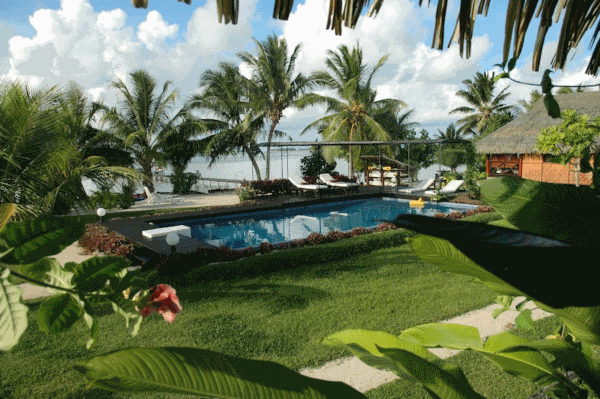
Tahaa is home to numerous private island resorts, one of which is the opulent Vahine Island Private Island Resort. While the property is the epitome of romance and attracts mostly honeymooners and couples, if nothing else I’ve realized throughout my trip that what you get out of an experience is what you put into it. So, I indulge in an opulent over water bungalow, traditional massages with vanilla Monoi oil on my private deck and 3 course candlelit French dinners made with local ingredients. But like the rest of my time in French Polynesia, I hike among the coconut groves and explore the island’s translucent blue lagoon. Additionally, I spend much time with Laure, one of the property managers, over drinks and dinner discussing Polynesian culture and how it’s woven into the property. I realize that whereas the couples are spending time enjoying their room and relaxing on the beach, as someone traveling solo I am forced to get out and interact with new people, which makes me feel like my choice was truly worth it.
On my last night, I’m sprawled out on a lounge chair on the beach, sipping a cocktail made with local fruits and flowers and watching a colorful sunset. The intense reds, oranges and yellows on the horizon are flecked with splashes of purple, green and pink, and I’m moved by the natural beauty. The truth is … you really don’t need to be traveling with someone to enjoy paradise.
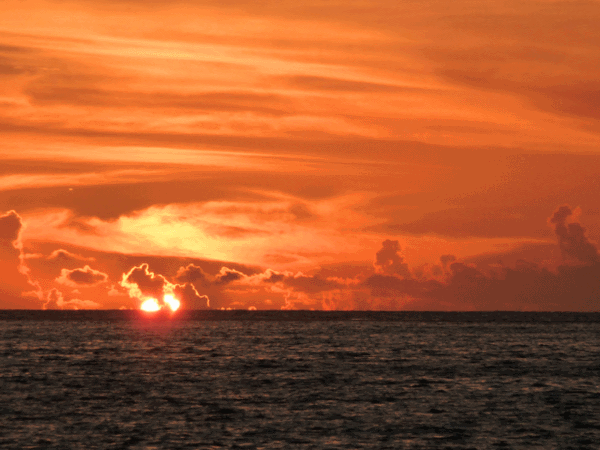
The country code For Tahiti is 689.
Where to Stay:
Vanira Lodge – Vanira Lodge is a holiday family home featuring comfortable bungalows in a remote part of Tahiti, away from mass tourism and the noise of the capital. Guests are immersed in gardens and jungle with paths that lead to nearby cliffs, hiking trails and a translucent lagoon. Enjoy a tasty continental or American breakfast and a 3-course dinner featuring traditional Polynesian fare. PK 15,6, Teahupoo, Tahiti. 689 57 70 18. vwww.vaniralodge.com
Le Meridien Tahiti – Le Meridien Tahiti is a luxury resort located only 10 minutes from the airport and 15 minutes from the wharf. Located on a white sand beach and lagoon, guests can enjoy the beauty of the outdoors, especially as the property also features a tropical botanical garden with over 300 plant species, carp pond and the largest white sand bottom pool in the Pacific. Choose from an array of room styles, including over-water bungalows, garden view rooms, lagoon view rooms and suites. PK 15 Cote Mer, Punaauia. 689 47 07 07. www.lemeridientahiti.com 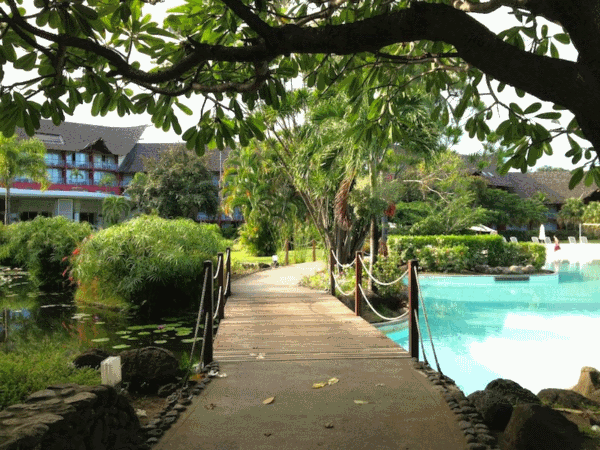
White Sand Beach Resort – Poste restante, Fakarava; 689 93 41 50
La Pension Tokerau Village – Rotoava, Fakarava; 689 98 41 09; www.tokerauvillage.com
Raiatea Lodge Hotel – Tevaitoa, 11111 Tumara; 33 689 66 20 00; www.raiateahotel.com/raiateaus
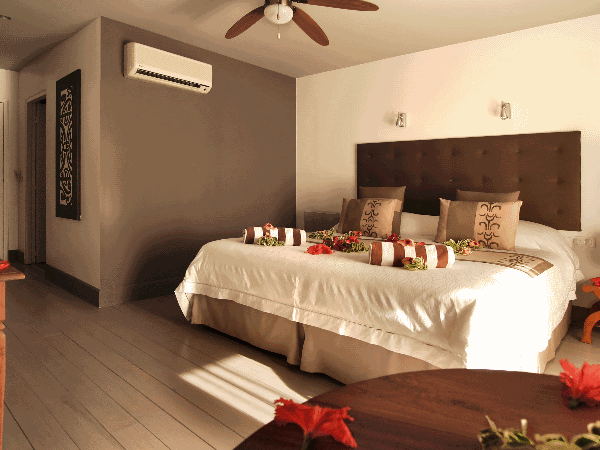
Fare Pea Iti – Patio, Tahaa; 689 60 81 1; www.farepeaiti.pf
Vahine Island Private Island Resort – Motu Tu Vahine, French Polynesia; 689 65 67 38
www.vahine-island.com Post: B.P.- 98735, Uturoa, Raiatea
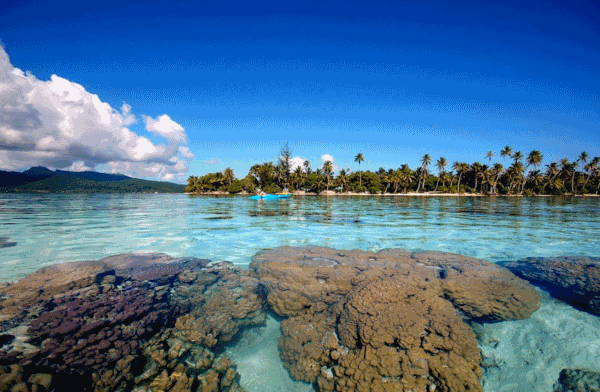
Where to Eat:
*If you’re staying in a pension and full or half board is not mandatory opt for the half to experience a home cooked meal, often served family style so you can mingle with other travelers and the locals who manage the property.
Les Roulottes – If you feel like skipping a meal at a fancy restaurant, head to Vaiete Square near downtown Papeete’s waterfront and sample Tahiti’s take on street food at Les Roulottes (the mobile dining trucks). The square comes alive after 6pm with trucks selling crepes, Chinese, Vietnamese, Italian, pizza, seafood, desserts and more. Moreover, the square is brimming with local musicians, skateboarders and artisans selling jewelry and handicrafts. Vaiete Square, Boulevard Pomare, Papeete, Tahiti.
Captain Bligh Restaurant and Bar – Housed in an expansive thatch-roofed building extending over a translucent lagoon, here guests can enjoy fresh seafood with beautiful views. Try the whiskey shrimp and mahi mahi served with a creamy pepper sauce. On weekends, patrons can take in a traditional Tahitian dance show, while the onsite Lagoonarium — which is free to enter when dining at the restaurant — allows for viewing sharks, turtles and tropical fish. Don’t miss the daily shark feeding at noon. Lagoonarium, PK 11, 4, Punaauia, West Coast of Tahiti. 689 43 62 90.
Le Coco’s -Touted as one of Tahiti’s most romantic restaurants, Le Coco’s is a lagoon side eatery with ambient views of Moorea that are most beautiful at sunset. The menu features French nouvelle cuisine with island influences like shrimp marinated in lime juice and coconut milk, and crispy red tuna with mango and turmeric, white tomato mousse with ginger and enoki mushrooms. PK 13,200 cote mer, Punavai, Punaauia, Tahiti; 689 58 21 08. www.lecocostahiti.com
What to Do and See:
Maroto Valley – Get away from the congested streets and noise of Papeete and head into the island’s interior, which is accessible by 4×4. Also known as the Papenoo Valley, the Maroto Valley is lush with green, tropical fruits and colorful flowers, as well as littered with waterfalls, reservoirs and ancient marae (sacred places used by ancient Polynesians). You’ll stop at various lookout points for photos, forage for wild strawberries and guava, visit the important Marae Fare Hape, go for a hike to a natural swimming pool and learn about Polynesian history. We recommend Marama Tours as the guides are knowledgeable and passionate about ancient Polynesia. www.maramatours.com
Museum of Tahiti and Her Islands – This is an informative museum focused on the geography, history, culture and natural features of the destination dating back thousands of year. Often touted as one of the best museums in the South Pacific, visitors can take in artifacts, old tools, tikis, sail boat replicas, stuffed birds, shells and more. The museum is free for students, children under 18 and seniors. Otherwise, admission is about $6.60 US per person, with free access to their garden from 8am to 6pm. Open Tuesday through Saturday from 9am to 5pm. BP 380 354 Tamanu, Punaauia, Tahiti. 689 54 84 35. www.museetahiti.pf
The Papeete Market (Marche de Papeete) – Covering 7,000 square meters (73,350 square feet) this expansive market sells everything: pareu, hats, bags, wood carvings, fabrics, handicrafts, food, spices, pearls, vanilla, Monoi oil, housewares and more. There is often live entertainment. The most impressive section of the market is the colorful fruits and flower area, with tiare Tahiti, pitate, tipanier, taina and more. The market is open daily from around 5am to 5:30pm, and is most lively in the morning. Located across from Ferry Plaza at Francois Cardella & Colette Streets.
Where to Learn More:
Marama Tours, Tahiti – www.maramatours.com
Fakarava Excursions and Fishing – www.tahitiguide.com/~fakaravafishing
Fakarava Explorer – For Fakarava excursions. www.fakaravavaiama.com
Raiatea & Tahaa Tourism – 689 66 20 86; www.raiatea.com
La Vallee de la Vanille, Tahaa – vanillavalley@gmail.com
Tahaa Tour Excursion – For tours on Tahaa; www.tahaatourexcursion.com
Hinano Pearl Farm, Fakarava – To make an appointment to visit call 689-98-41-51 or email hinanohellberg@mail.pf

